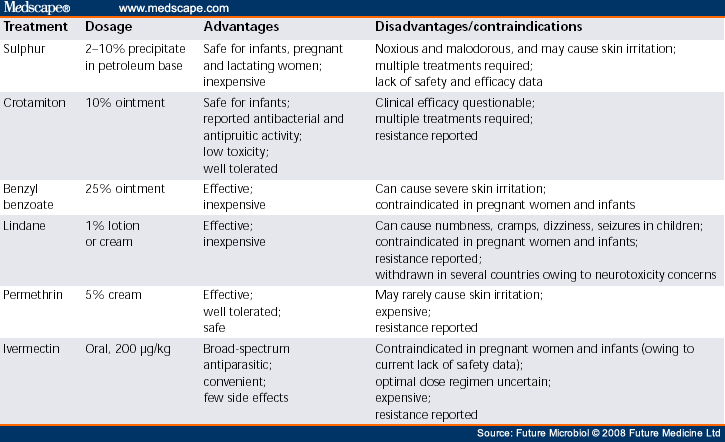Molecular Mechanisms for Permethrin & Ivermectin Resistance
Factors influencing the emergence of drug resistance[42] include the biology and life cycle of the parasite,[43] and the genetic diversity of the parasite prior to drug selection. Increased diversity also increases the likelihood of resistance alleles existing in a population before selection. How does this apply to the emergence of resistance in scabies? Scabies mites have a short, direct life cycle that may favor resistance development. In ordinary scabies, reproductive success and resulting mite populations are kept relatively low owing to host immunity, but the opposite is true for crusted scabies. Indeed, microsatellite studies confirm substantial genetic heterogeneity, with up to 46 alleles at a particular locus reported in a single population of mites obtained from a crusted scabies patient.[44]
Mechanisms for resistance to topical pesticides in arthropods are well established and include:
Target alteration, for example, mutations to the voltage-sensitive sodium channel, the target of pyrethroid insecticides;
Increased enzymatic degradation by esterases (e.g., carboxylesterase B1), or other detoxification enzymes, such as the cytochrome P450 and glutathione S-transferases.[45,46,47,48]
Molecular evidence suggests that ivermectin-resistance mechanisms are complex, multifactorial and may differ between closely related organisms.[42] However, several candidate mechanisms are well established. Changes to the target of macrocyclic lactones, the ligand-gated chloride channels, have been implicated in ivermectin resistance in several nematode and arthropod species.[49,50,51] Ivermectin is an excellent substrate for ATP-binding cassette (ABC) transporters, such as P-glycoprotein, which are associated with multidrug resistance through efflux pumps in many species. Allelic selection at P-glycoprotein has been associated with ivermectin exposure in several nematode species, including O. volvulus.[52,53] Increased transcription of P-glycoprotein among ivermectin resistant nematodes has also been reported.[54] Several non-P-glycoprotein ABC transporter genes from O. volvulus also show selection after ivermectin treatment.[55] Additionally, studies in arthropods of resistance to the related macrocyclic lactone abamectin advocate a role for metabolic mechanisms,[56,57] although limited molecular data are available to support this.
Future Microbiol. 2008;3(1):57-66. © 2008 Future Medicine Ltd.
No writing assistance was utilized in the production of this manuscript.
Cite this: Scabies: Molecular Perspectives and Therapeutic Implications in the Face of Emerging Drug Resistance - Medscape - Feb 01, 2008.






Comments